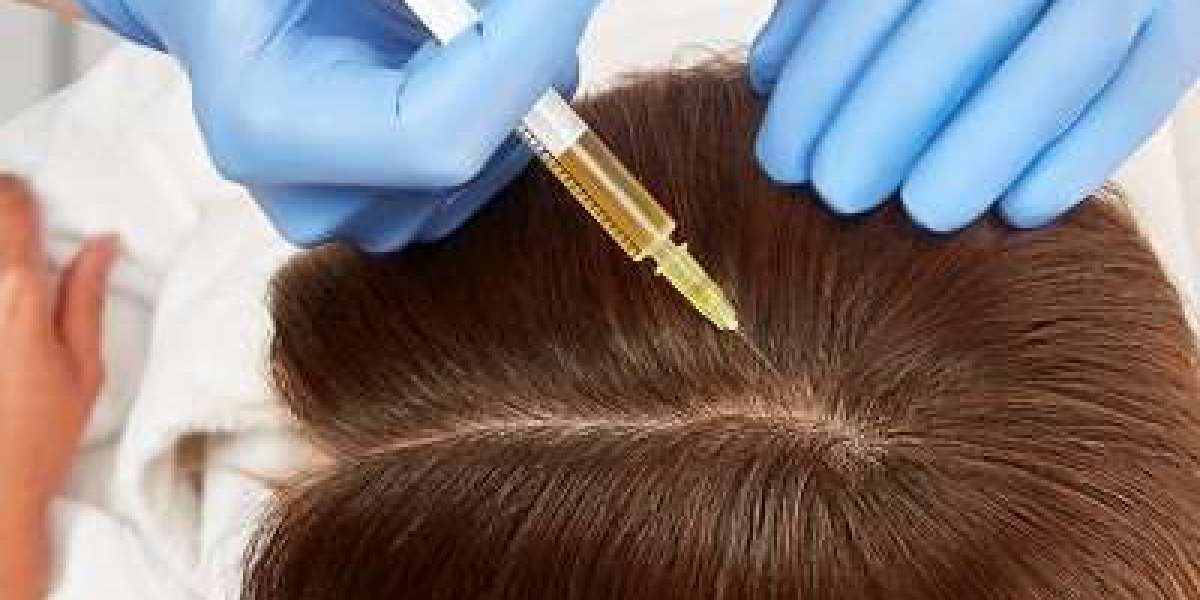Platelet-Rich Plasma (PRP) therapy has gained popularity as an effective treatment for hair loss, particularly among individuals experiencing conditions like androgenetic alopecia. This innovative procedure harnesses the healing properties of your own blood to stimulate hair follicles, promoting hair regrowth and density. However, many patients wonder: what happens if I stop PRP therapy? In this blog, we’ll delve into the effects of discontinuing PRP treatments, the timeline of changes you might experience, and alternative options for maintaining hair health.
Understanding PRP Therapy:
PRP therapy in Islamabad involves three main steps: drawing blood from the patient, processing it to concentrate the platelets, and injecting the PRP into the scalp. The growth factors present in PRP play a crucial role in promoting healing and stimulating dormant hair follicles. Initially, patients typically undergo a series of treatments, followed by maintenance sessions to sustain the benefits.
Immediate Effects of Stopping PRP:
Gradual Hair Shedding: One of the most noticeable effects of discontinuing PRP therapy is a gradual return to the hair loss experienced before treatment. While some patients may see immediate results post-treatment, the long-term effects require ongoing sessions. Once you stop, the benefits achieved can diminish, leading to increased shedding and thinning.
Reduced Hair Thickness: PRP helps improve hair density by rejuvenating hair follicles. Without continued treatments, you may notice a decline in hair thickness over time. The growth factors that were once stimulating your hair follicles will no longer be present, leading to thinning hair.
Return of Underlying Conditions: If you had an underlying condition causing hair loss, such as androgenetic alopecia, stopping PRP may allow this condition to progress again. As a result, you might experience the same hair loss patterns that prompted you to seek PRP therapy initially.
Timeline of Changes After Stopping PRP:
The effects of stopping PRP therapy can vary among individuals, but here’s a general timeline of what to expect:
First Month: In the weeks immediately following your last PRP session, you may notice that your hair continues to look fuller and healthier. The effects of the last treatment linger during this time.
1-3 Months: As the weeks progress, the benefits of PRP begin to fade. Shedding may start to increase, and you might observe a gradual thinning of your hair, particularly in areas previously treated.
3-6 Months: By this point, many individuals will experience a noticeable decline in hair density. The results from previous PRP sessions may diminish, leading to more pronounced hair loss.
Beyond 6 Months: At this stage, the absence of ongoing PRP treatments could result in hair loss similar to what you experienced before starting therapy. The natural aging process and any underlying hair loss conditions may resume their effects.
Long-Term Considerations:
Discontinuing PRP therapy may lead to several long-term implications for your hair health:
Psychological Impact: Hair loss can affect self-esteem and confidence. Many individuals find that PRP therapy not only improves hair growth but also positively impacts their mental well-being. Stopping treatment may lead to a resurgence of these concerns.
Variable Results: The impact of stopping PRP therapy can differ among individuals based on various factors, such as the extent of hair loss before treatment and individual response to PRP. Some may notice a rapid decline, while others might maintain some benefits for a longer period.
Alternatives to PRP Therapy:
If you’re considering stopping PRP, it’s important to explore alternative options to maintain your hair health:
Topical Treatments: Products containing minoxidil or finasteride can be effective in managing hair loss. These treatments can complement or serve as alternatives to PRP therapy.
Nutritional Support: A balanced diet rich in vitamins and minerals can support hair health. Incorporate foods high in protein, iron, and essential fatty acids for optimal hair growth.
Hair Restoration Procedures: If PRP therapy no longer meets your needs, consider other options like hair transplants or low-level laser therapy. Consulting with a specialist can help you identify the best alternative for your situation.
Regular Follow-Ups: If you choose to discontinue PRP, it’s beneficial to maintain regular consultations with a hair restoration specialist. They can provide guidance on how to manage your hair health moving forward.
Conclusion:
In summary, stopping PRP therapy can lead to significant changes in your hair health over time. While you may initially see some lingering benefits, the absence of ongoing treatment typically results in a gradual return to pre-treatment hair loss patterns. If you’re considering discontinuing PRP, it’s essential to understand the potential consequences and explore alternative treatments that may help maintain your hair’s health and appearance. Ultimately, consulting with a healthcare provider can guide you in making informed decisions that align with your hair restoration goals.
For more information visit Dynamic Clinic PK







